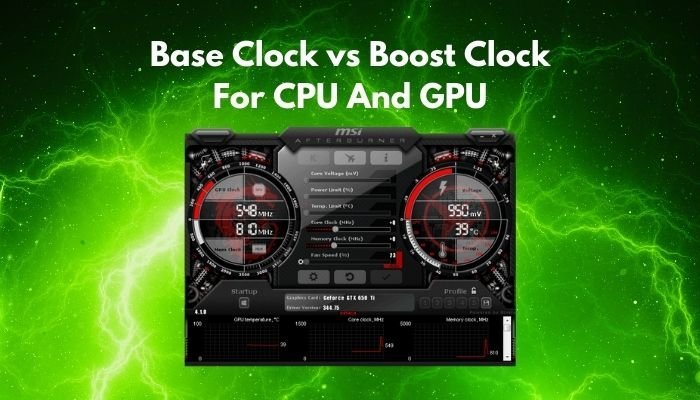In the realm of graphics processing units (GPUs), the term “Boost Clock” holds a significant place, often touted as a key feature in determining a GPU’s performance capabilities. But what exactly is the Boost Clock, and how does it influence the GPU’s functionality? Let’s unravel this concept step by step:
Understanding GPU Clock Speeds
GPUs, like CPUs, operate at various clock speeds that determine how fast they can process data. Clock speeds are measured in megahertz (MHz) or gigahertz (GHz) and define the number of cycles a GPU can execute per second.
Base Clock vs. Boost Clock
The Base Clock is the standard operating frequency of the GPU set by the manufacturer. On the other hand, the Boost Clock represents the maximum frequency the GPU can reach under optimal conditions, dynamically adjusting itself based on workload and thermal constraints.
Boost Clock Functionality
When the GPU is engaged in demanding tasks such as gaming or rendering, it utilizes its Boost Clock to ramp up performance. This dynamic adjustment enables the GPU to temporarily exceed its Base Clock speed, providing extra power for short bursts when needed.
Thermal and Power Constraints
The Boost Clock’s functioning is heavily influenced by factors like temperature and power consumption. If the GPU’s thermal limit is reached, it might throttle down to prevent overheating, causing the Boost Clock to decrease.
GPU Boost Technologies
GPU manufacturers employ proprietary technologies (like NVIDIA’s GPU Boost or AMD’s PowerTune) to manage clock speeds dynamically. These technologies monitor temperature, power draw, and workload to adjust clock speeds for optimal performance without surpassing safety limits.
Enhancing Performance
A higher Boost Clock typically indicates better performance potential, especially in tasks that demand quick bursts of power, such as gaming. Overclocking, when done cautiously, can also push the GPU beyond its Boost Clock for increased performance, though it can void warranties and risk stability.
Real-World Impact
In practical terms, the Boost Clock can significantly impact gaming experiences. It allows GPUs to deliver smoother frame rates and handle more demanding graphics settings in games by dynamically scaling performance as required.
Considerations for Users
When selecting a GPU, considering both the Base and Boost Clock speeds is crucial, as these figures indicate the expected performance range. However, real-world performance also depends on other factors like architecture, memory, and driver optimizations.
Optimizing GPU Performance
Regular driver updates from GPU manufacturers often include optimizations that can enhance Boost Clock performance. Ensuring your drivers are up to date can maximize the potential of your GPU.
Final Thought:
The Boost Clock represents a crucial aspect of GPU performance, enabling dynamic adjustments to meet the demands of modern applications and games. Understanding its role empowers users to make informed decisions when choosing or optimizing their GPU for various tasks.
In essence, the Boost Clock serves as a dynamic performance enhancer, allowing GPUs to temporarily exceed their standard operating speeds, providing a tangible boost in performance when needed most.
